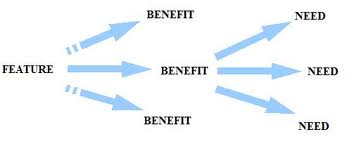What Is Marketing
Fuel Your Growth: Marketing Resources That Deliver Results
Education-Based Marketing vs. Sales-Based Marketing: Why the Right Approach Determines Coaching Business Success

What’s the single most important factor determining whether your coaching business thrives or struggles?
The answer may surprise you, and it could fundamentally reshape how you run your business. It affects your mindset, your daily activities, your client relationships, and ultimately, your bottom line.
We surveyed dozens of coaches and received a wide range of responses: “delivering high-quality service,” “having more clients,” “setting the right price,” “strong branding,” or “compelling ad copy.” While all of these elements matter, none is the foundational driver of sustainable success.
The true linchpin? Your marketing methodology.
Specifically, whether you rely on sales-based marketing, the traditional, transactional approach, or education-based marketing, a trust-first strategy that aligns far more closely with the values and strengths of most coaches.

The Problem with Sales-Based Marketing for Coaches
Sales-based marketing dominates mainstream advertising: TV commercials, billboards, cold calls, direct mail, and hard-sell copy. It’s designed to push a product quickly, often using urgency, scarcity, or persuasive tactics.
But for coaches, whose work is deeply relational, transformational, and trust-dependent, this approach creates serious obstacles:
1. Psychological Discomfort: Most coaches are skilled practitioners, not natural salespeople. They feel inauthentic pitching themselves, which undermines confidence and weakens client perception.
2. High Cost, Low Margin: Traditional advertising (e.g., paid ads, print media) is expensive. High customer acquisition costs erode profitability, especially when conversion rates are low.
3. Audience Resistance: Modern consumers are skeptical of overt sales tactics. Studies (e.g., from Edelman Trust Barometer and HubSpot) consistently show that people distrust traditional advertising and prefer authentic, helpful content.
4. Lack of Trust & Rapport: Sales pitches rarely build genuine connection. Yet trust is essential in coaching, clients invest in you, not just a service.
5. No Reciprocity: Robert Cialdini’s principle of reciprocity shows people are more likely to engage when they’ve received value first. Sales-based outreach offers nothing upfront.
6. Attracts the Wrong Prospects: Hard-sell methods often draw price-sensitive “tire-kickers” rather than committed, qualified clients ready for transformation.
7. Poor Follow-Up: Research (e.g., from MarketingDonut and Salesforce) shows it takes 5–7 touchpoints on average before a prospect converts. Sales-based outreach rarely sustains this nurturing process.

The Alternative: Education-Based Marketing
Education-based marketing flips the script. Instead of selling, you solve. You provide valuable, relevant insights that address your ideal client’s real challenges, before asking for anything in return.
This approach leverages what coaches do best: teach, guide, and empower.
Common education-based tactics include:
- Free workshops or webinars
- Informative blog posts, videos, or podcasts
- Downloadable guides, assessments, or toolkits
- Public speaking at industry events
- Newsletter content that educates, not pitches
- Social media posts that answer common questions

Why Education-Based Marketing Works—Especially for Coaches
1. Builds Trust Early: By offering genuine value, you position yourself as a credible expert, not a salesperson.
2. Attracts Qualified Leads: People who seek your free resources are already interested in solving the problems you address.
3. Reduces Marketing Costs: Content can be repurposed and scaled (e.g., a webinar recording becomes a YouTube video, blog post, and email series).
4. Generates Referrals Naturally: Clients and prospects are more likely to refer others when they’ve benefited from your free advice, even if they haven’t hired you yet.
5. Creates Reciprocal Obligation: When you give value first, people feel inclined to return the favor—often by booking a discovery call or purchasing your program.
6. Positions You as the Obvious Choice: Over time, consistent education establishes you as the go-to authority in your niche.
7. Scales Without Burnout: Evergreen content (like a lead magnet or on-demand course) works 24/7 to attract and nurture prospects, even while you sleep.

The Bottom Line
While sales-based marketing may generate short-term leads, education-based marketing builds long-term authority, trust, and sustainable growth, all while aligning with the authentic, service-oriented mindset of most coaches.
If your current marketing feels pushy, expensive, or ineffective, it’s not you, it’s the method. Shift from selling to serving, and watch your business transform.
Ask yourself:
- How much of my current marketing is truly educational?
- Where can I replace a pitch with a helpful insight?
- What free resource could I create this week that solves a real problem for my ideal client?
The coaches who master education-based marketing don’t just get more clients, they build respected, resilient businesses that thrive on trust, not transactions.
Sources & Fact-Checking Notes:
- Edelman Trust Barometer: Confirms declining trust in traditional advertising; rising trust in experts and peers.
- HubSpot Research: Shows 82% of consumers want brands to act as trusted advisors, not salespeople.
- Robert Cialdini’s "Influence": Validates reciprocity as a core principle of persuasion.
- Salesforce Data: Average B2B buyers require 5–7 interactions before purchasing.
- MarketingDonut & Demand Gen Report: Support multi-touch nurturing as critical for conversion.

Tips And Guide On Market Segmentation
What is marketing: Market segments consist of groups of people or organizations that are similar in terms of how they respond to a particular marketing mix or in other ways that are meaningful for marketing planning purposes. The entire field of market segmentation is based on this idea, that consumers have differing needs. They will find value in different products. They will respond differently to marketing communications.

They will gravitate toward different price points. Because of this, businesses operate more efficiently if they can act on those differences. A business that tries to offer a single undifferentiated product with generic marketing support will always lose out to more nimble competitors who have specific targets and know how to serve them. An illustration would be for health plans.
Marketing Segmentation
In the Medicare Part D world for instance, health plans are struggling to make sense out of new regulations while meeting very tight deadlines. But today’s difficulties are going to give way to a market where segmentation will be of great benefit because mass marketing will not work. Which Segment? It is obvious that all competitors cannot target the same segment and succeed. A common mistake is to assume that you must focus on the "heavy buyers" who, in reality, are often not the most profitable group.
For example, a consulting firm may decide to forego targeting Fortune 500™ firms that are fiercely contested by the Big Four accounting/consulting firms and instead pursue middle market firms. "Sub prime" lenders and credit card companies know exactly who their prospects are, and do not bother advertising in Money magazine or funding public television shows. Part D players may find market niches among seniors with, for example, private Medigap policies and specific interests or needs that the plan can address. For health plans, market segmentation is not common.
Part of this is due to health plan cultures developed to serve large employer-based health plans and retirees. But Medicare Part D is an unprecedented public-private effort to create a consumer market. And Medicare's Part D program is just one element of a far reaching effort to use private health plans to control Medicare expenses.
We believe the market understanding developed through segmentation will serve in a variety of ways. Identifying and targeting one or a few segments instead of the entire market allows the firm to use its resources more effectively. Market segmentation means products and messages more aligned with the needs of selected consumers.
We Are Helping 1000 Businesses Amplify Their Online Presence
Researching Segments Some type of systematic research is required as a foundation for market segmentation. Most often, this research entails a sample survey which should be done by research experts. Segmentation research addresses a set of fundamental questions:
- 1. How many segments are there?
- 2. How large is each segment?
- 3. How do you define the segments?
- 4. How do you describe the segments?
Segments are typically defined by dimensions such as:
- • Behavior—such as the frequency of purchasing, total spending, or the mixture of stores shopped (switching, investigating, comparing, delegating decisions), or
- • Characteristics—such as geodemographics for consumers or SIC codes for businesses (health conditions, subsidy status, current coverage status), or
- • Attitudes—such as financial sophistication, fashion orientation, or disposition to adopt new technologies (interest, optimism).
The variables that are used to define the segments are called the "basis." The basis is chosen in light of how the segmentation will be applied. Direct marketers, for instance, carefully dissect their databases in terms of purchase behavior. Other segments are based on consumers’ motivations and concerns. Marketers choose this because motivations and concerns are what cause consumers to act on an offer. We don’t think that there is only one "correct" way of doing segmentation research, nor that there is a single set of segments waiting to be "discovered." While the analysis needs to employ objective statistical methods, any number of judgments, preferences and practical considerations go into the design of the process and the final determination of the segment structure. The same dataset can yield different segments.
Market segmentation spotlights opportunities for health plans to improve marketing and sales, staff training, customer service, newly enrolled intake, business planning, and public relations. It will be used by health plans that want to assure they emerge from this period of dramatic Medicare market change as a coverage provider of relevance and viability. Part of this means achieving sales and marketing goals. Furthermore, establishing a market position where consumers think of you as you’d like them to think of you.
Compared to other forms of marketing research, the sample sizes for segmentation studies tend to be large. The simple reason is that you need to be able to profile multiple sub-samples (the segments) with a high degree of precision, rather than just the total sample. It is unusual to use fewer than 500 and not unusual to use 2,000-3,000.

Analysis The most complex and opaque part of segmentation research is the derivation of the segments—that literally means dividing the sample into a small number of exclusive clusters.
This is almost always done by applying some form of statistical cluster analysis. The analyst will typically try several different cluster "solutions." While there are objective statistical measures of the quality of a cluster solution, they are no more important than informed managerial judgment. Researchers often offer two or three possibilities to discuss. The "right" number of segments is subjective, but in practice companies tend to settle on four to eight segments. In a diverse, complex, and lucrative category more might be called for. Agreeing on the number of segments, as well as the labels that will be attached to them, always requires careful study of their full profiles. While the segments may be defined with one class of basis variables (e.g. attitudes about fashion and shopping), you always need to describe the segments in terms of other variables (e.g. demographics, spending, media preferences, preferred brands) that were not part of the definition of the segments.
Application An important deliverable from most segmentation research is a tool for classifying other consumers into the segments. This could be a formula where by asking a small number of questions you can place a "new" consumer in one of the segments. It could be a set of logical rules ["if combined account balances >$10,000 + have at least three accounts + non-mortgage debt < $20,000: assign to segment G"].
Conclusion Market segmentation is a far-reaching strategy that can benefit players. The underlying rationale is to use your resources more efficiently by serving consumer needs better.
The
mechanism is to treat the market as consisting of multiple segments
with different needs, rather than as a mass market where "average"
really suits no one very well. The research requires a sample survey. It defines and describes segments from which one can choose one or more targets.
Guide To Promoting An Unfamiliar Business Effectively
Focus On The Benefits To Your Customers
The Power Of Targeted Marketing
Browse All Our Informative Topics
InternetBusinessIdeas-Viralmarketing Home Page
Tweet
Follow @Charlesfrize















New! Comments
Have your say about what you just read! Leave a comment in the box below.